
I will never forget one of my first histology practicals. The professor adds a drop of an egg white-like liquid to the glass slide of a microscope. He told us that we would see certain types of cells. When we all focused our eyes, we saw a number of little bugs with little heads and tails, twitching nervously with upward contortions. That's when I met the beloved spermatozoa live.
It seemed like magic to me, how through those little lenses you can see life forms that we cannot discriminate with our sense of vision.
So from that day on, I felt the desire to have a microscope at home, and several lenses, to recreate myself and to be able to know a new universe of life.
A desire that I was able to fulfill months later. I remember that sometimes, we would go out of medical school, some friends from the classroom to my house, to spend hours discovering everything that passed through our minds. From blood, onion peels, plants, human and animal hair, to the remembered spermatozoa.
"Correct"/Tokyo brand Japanese lenses
They were manufactured by Seiwa Optical Co, Tokyo, Japan, starting in 1964.
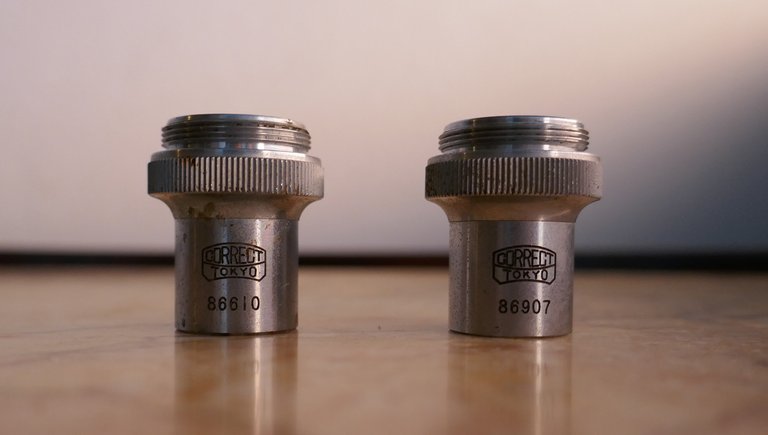
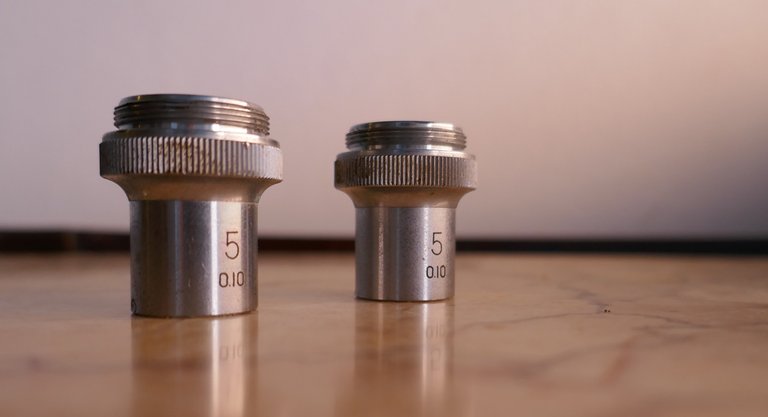
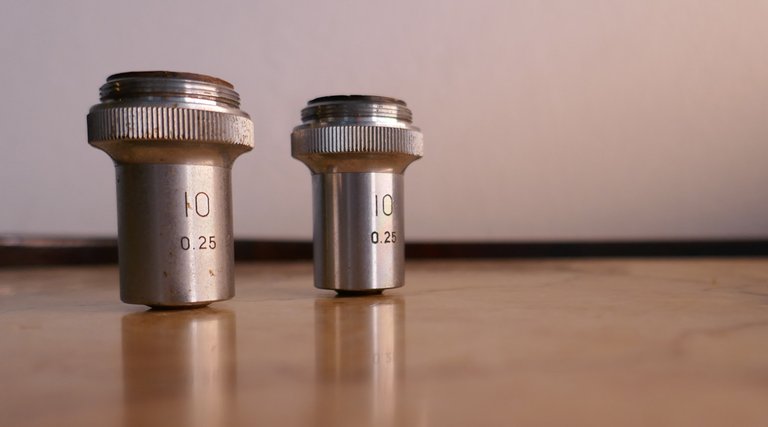
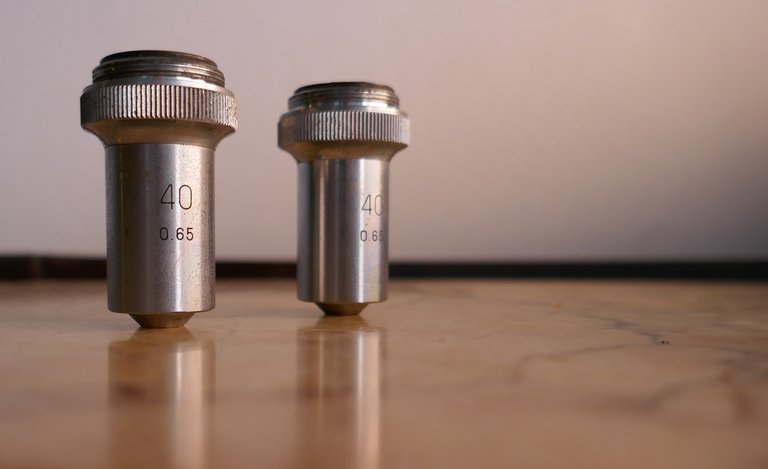
All objective lenses are responsible for producing changes in the direction of light propagation to magnify the image of objects on the stage of a microscope.
For their magnification, there are different combinations:
Four objective: x4, x10, x25, x50
Five objectives: x 2.5, x5, x10, x25, x50, x50
The number after the X indicates the number of times a lens increases the size of the object. Example, an objective lens with number 5 increases 5 times the size of the analyzed sample.
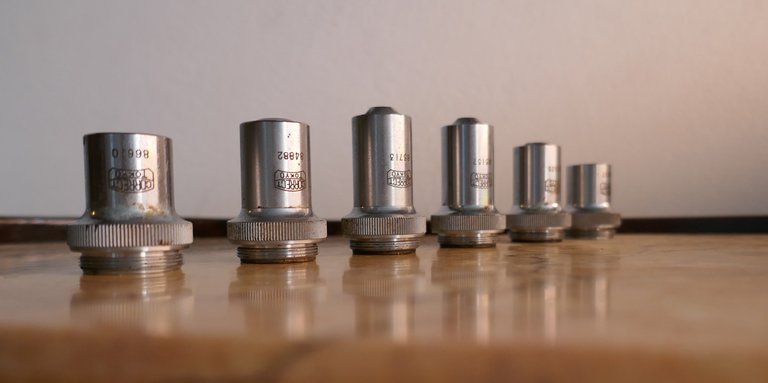
German lenses brand "Carl Zeiss"/Jena
In matters of optics and quality of lenses and crystals. Many will be able to mention, the leader of excellence and world-wide fame Carl Zeiss. Honorable lens builder, who since 1840, began to create them with great mastery, quality and sharpness.
As seen in these photos, apart from the brand name, we see the name Jena. It was the city where he made his first laboratory, starting his long career as a specialist in optics.
It is worth mentioning that Zeiss began manufacturing lenses for microscopes, before venturing into photographic cameras.
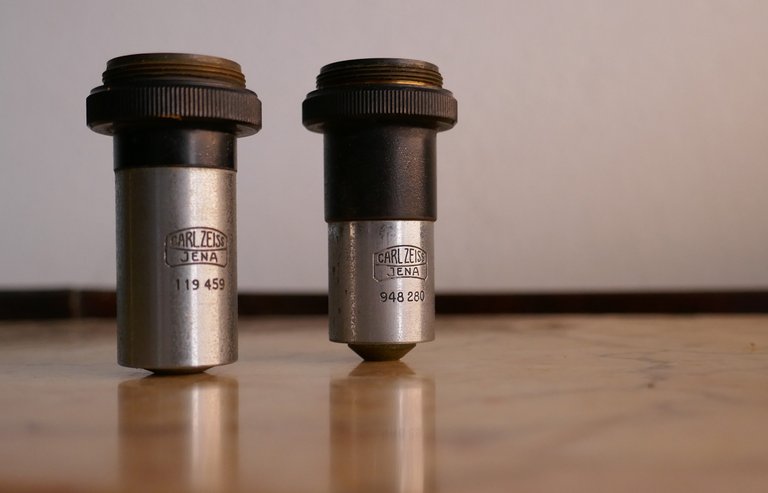
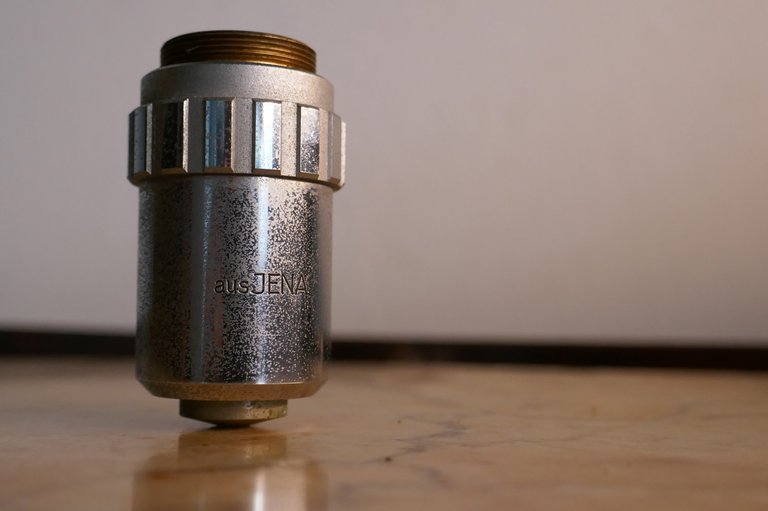
"Olympus" brand Japanese lenses
One of the prestigious brands, created since 1919, in Japan, where they focused on manufacturing microscopes.
After 1930, they worked on improving the design and functionality of their products.
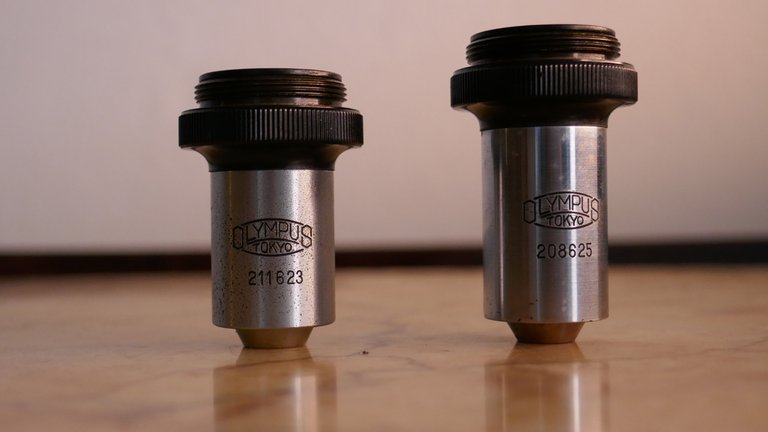
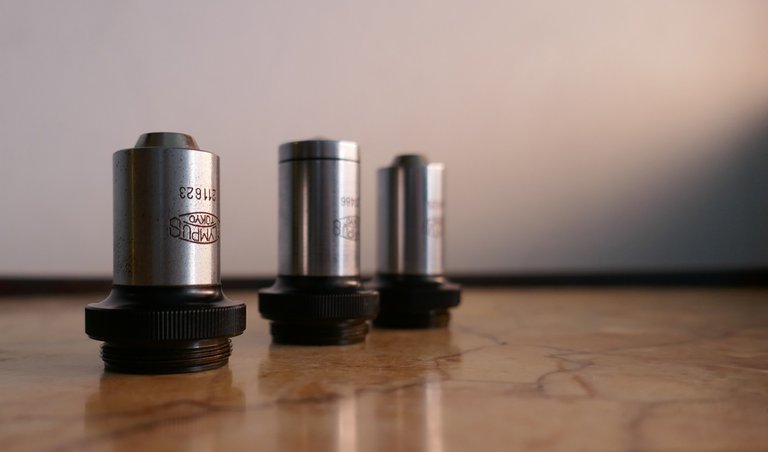
Most commonly used types of optical lenses:
Flat lenses
They stand out for their ease of assembly, lower price, and their simplicity which contrasts with their durability.
They guarantee a sharp image due to the correct direction of light on the observed structures. Their surface is shaped like a biconvex lens.
Cylindrical lenses
Although they are the most difficult to produce, they achieve higher magnification than flat lenses. Thanks to their high quality glass, they allow better focusing.
My lenses with brass coating
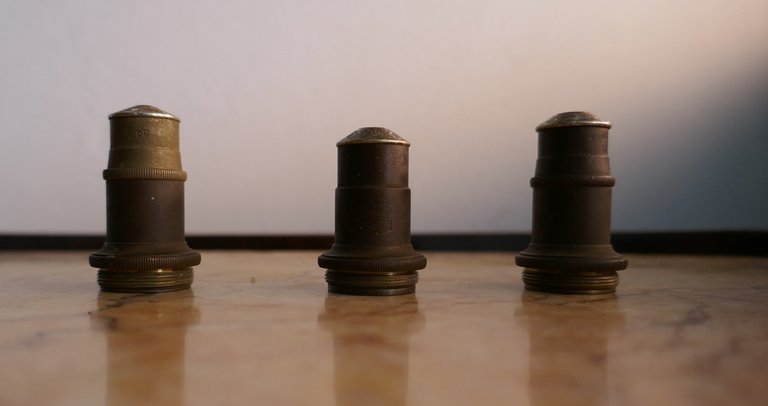
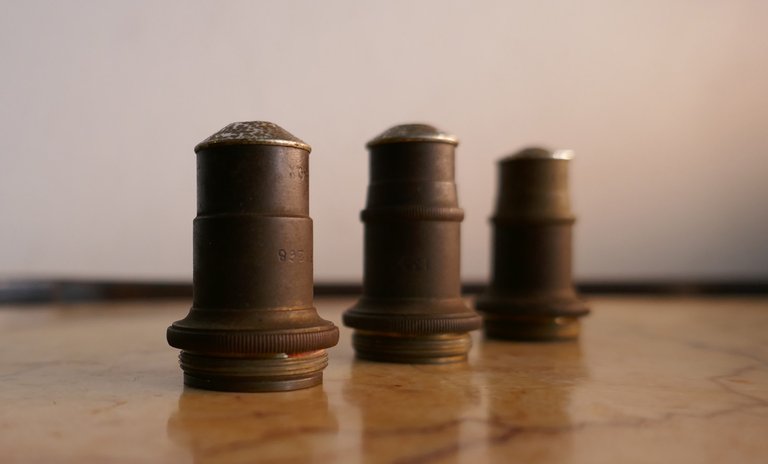
European lenses
These lenses were created in Western Europe, specifically France, by the French Society of Optical Instruments.
These lenses, copper-toned, have an appearance that reminds me of the antique lighthouses we see on a maritime shoreline.
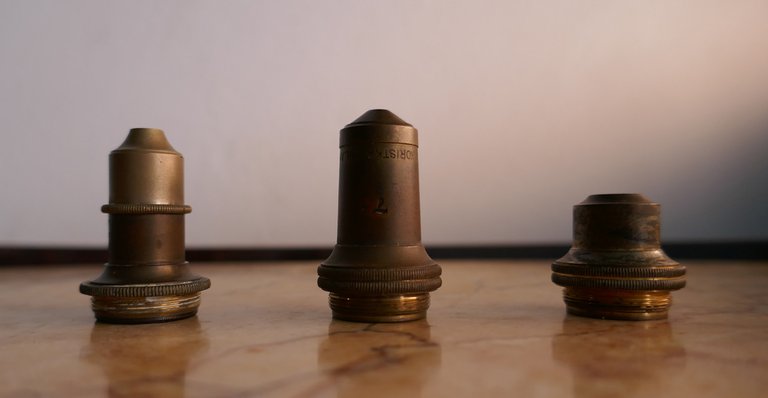
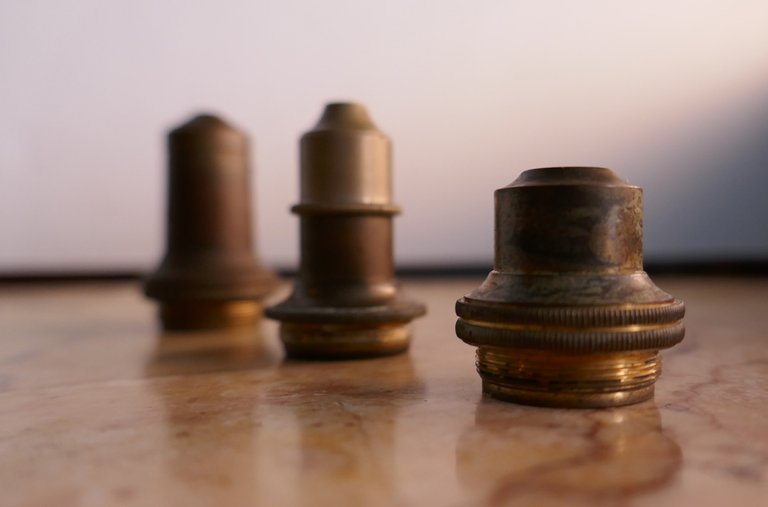

One of my Soviet lenses
They are strong lenses and of great construction, but they do not surpass the German lenses in optical quality.
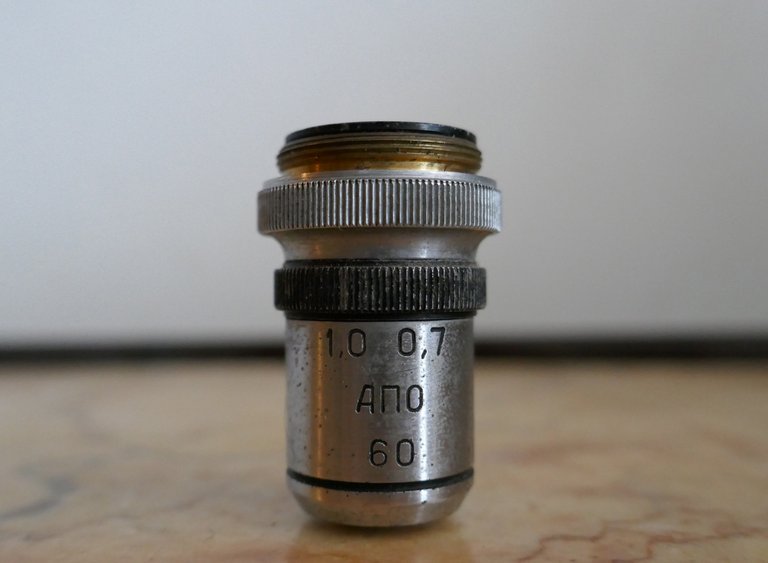
Photographers know that quality lenses are more valuable than the camera body itself.
The same is true of a microscope. They allow us to appreciate an unknown, interesting and real world.
Friends, without these magnifying objective lenses, we would not be able to know many of the results that a medical laboratory or many other branches of the natural sciences have to offer. Even outside of them, they have a wide range of uses and functionalities.
Have a good Wednesday. Best regards
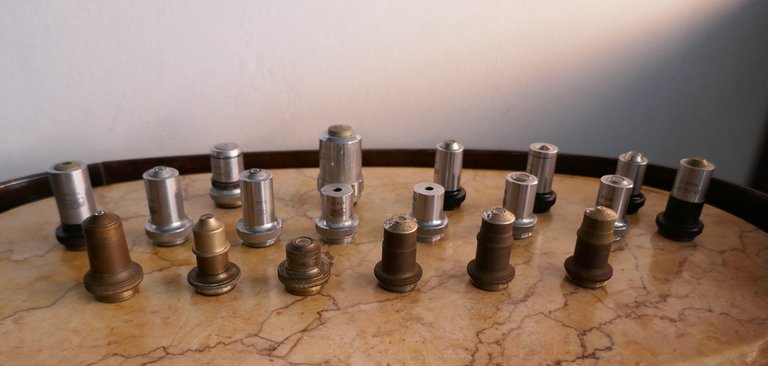

Own photos. Camera: Panasonic Lumix model DMC-ZS100
Text by Andrés BrunetText divider. Free use from @eve66
Thank you for reading
Welcome your comments
Infinite greetings!
You have a really interesting and unique hobby! Where do you find these lenses? I suppose that you are using them in your professional life, but that's a really big collection!
I have picked this post on behalf of the @OurPick project which will be highlighted in the next post!
Also from online sales sites in my country.
In my medical profession, I used them a lot. Now I enjoy them as collector's items. They treasure a great history, longevity and that to me brings them great value.
Thank you for writingHi @ph1102. These are lenses I have acquired over the years, from people who sold their equipment, accessories and parts.
this is an awesome collection. I didn't expect you to have a unique collection like this @abrunet
You will go little by little, knowing others. Good day to youThank you @maytom for commenting. Actually, my collections of medical objects, I love and to acquire them I spent time, patience and pay their value.
Impressive collection @abrunet, as always! 🙌👏
Es una colección que me encanta. Como objetos tan pequeños, pueden abrirnos a conocer un universo amplio que es desconocido a nuestros ojos. Gracias @mipiano. Que tengas un lindo miércoles.
Es verdad, y que tan pequeños son pero nos abren la vista a ese mundo desconocido :))
Igualmente, un feliz día y saludos hacia Cuba!! 🤓
Delegations welcome! You've been curated by @amazingdrinks!
Esta es una colección bastante original y única. Eso es lo que llama mucho la atención, te felicito por este hobby tan interesante y por mostrarnos sobre ella. ¡Un saludo!
Gracias @hanselmusic. Así es, es una colección bien específica, pero al ser médico tengo la influencia para motivarme por ese tipo de objetos. Es unir mi gusto por lo Vintage, las cosas fabricadas para durar, el Coleccionismo y las Ciencias Médicas. Saludos